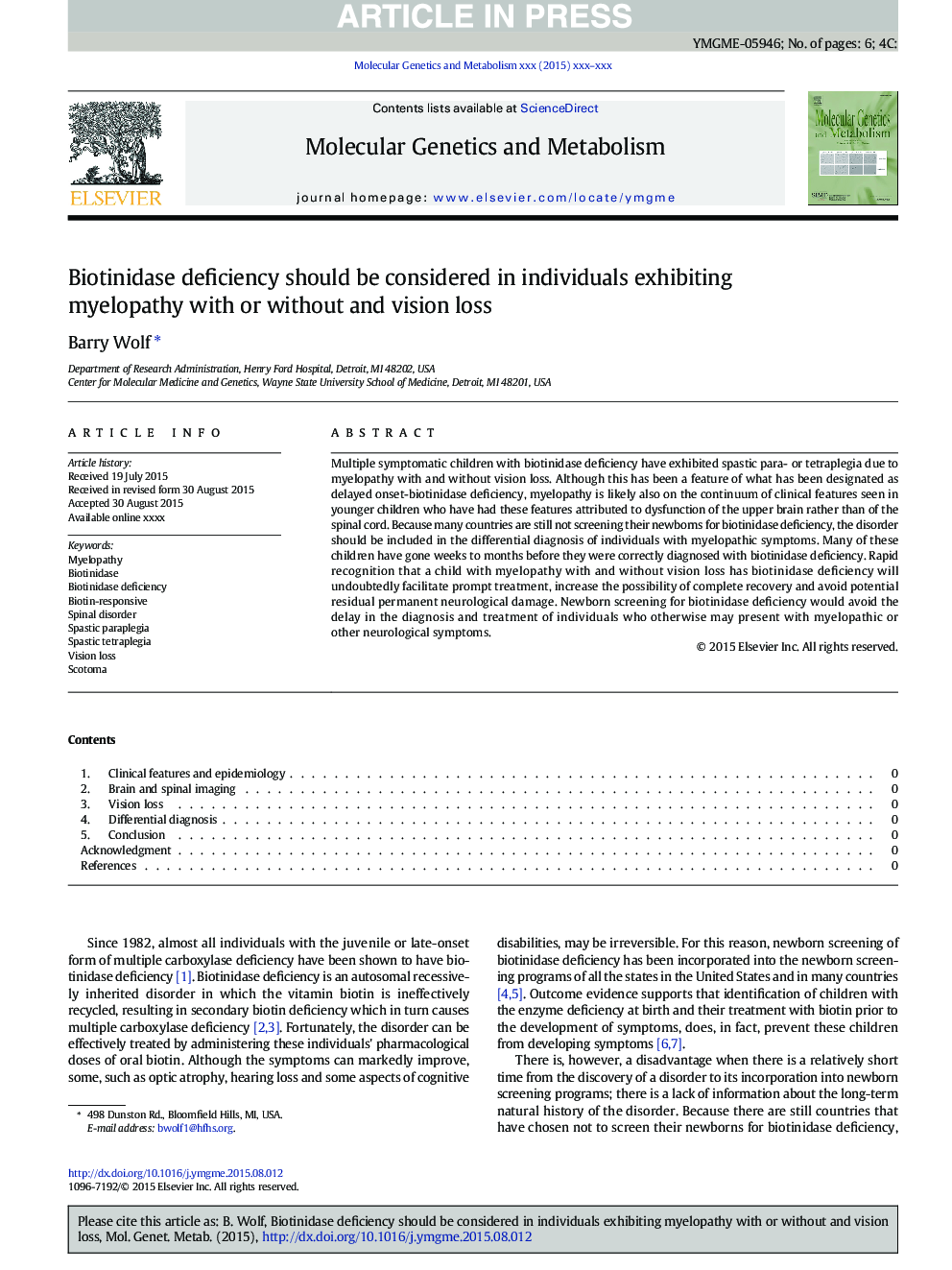| Article ID | Journal | Published Year | Pages | File Type |
|---|---|---|---|---|
| 1998262 | Molecular Genetics and Metabolism | 2015 | 6 Pages |
Abstract
Multiple symptomatic children with biotinidase deficiency have exhibited spastic para- or tetraplegia due to myelopathy with and without vision loss. Although this has been a feature of what has been designated as delayed onset-biotinidase deficiency, myelopathy is likely also on the continuum of clinical features seen in younger children who have had these features attributed to dysfunction of the upper brain rather than of the spinal cord. Because many countries are still not screening their newborns for biotinidase deficiency, the disorder should be included in the differential diagnosis of individuals with myelopathic symptoms. Many of these children have gone weeks to months before they were correctly diagnosed with biotinidase deficiency. Rapid recognition that a child with myelopathy with and without vision loss has biotinidase deficiency will undoubtedly facilitate prompt treatment, increase the possibility of complete recovery and avoid potential residual permanent neurological damage. Newborn screening for biotinidase deficiency would avoid the delay in the diagnosis and treatment of individuals who otherwise may present with myelopathic or other neurological symptoms.
Related Topics
Life Sciences
Biochemistry, Genetics and Molecular Biology
Biochemistry
Authors
Barry Wolf,
